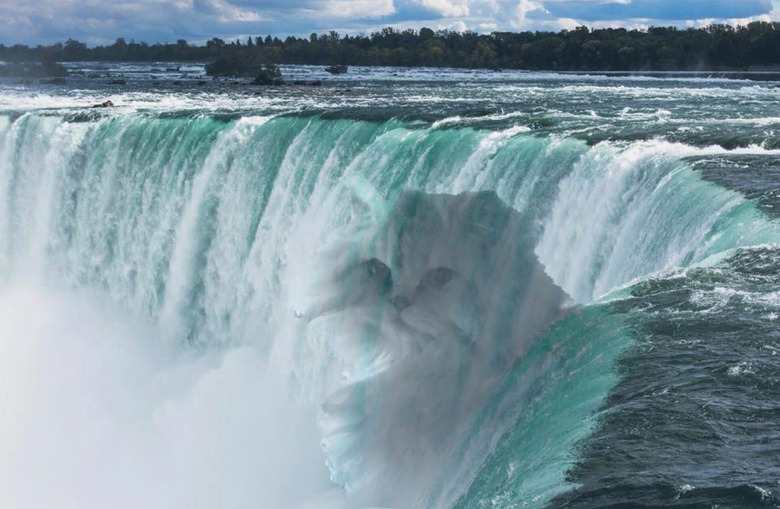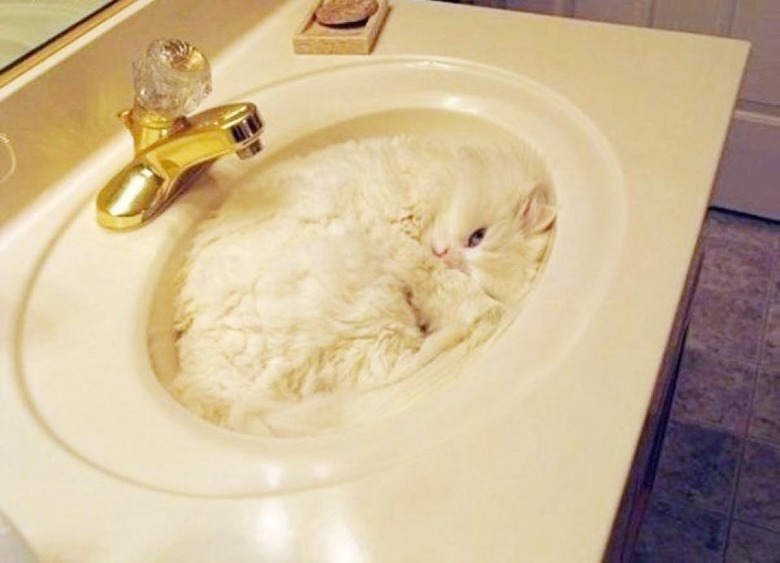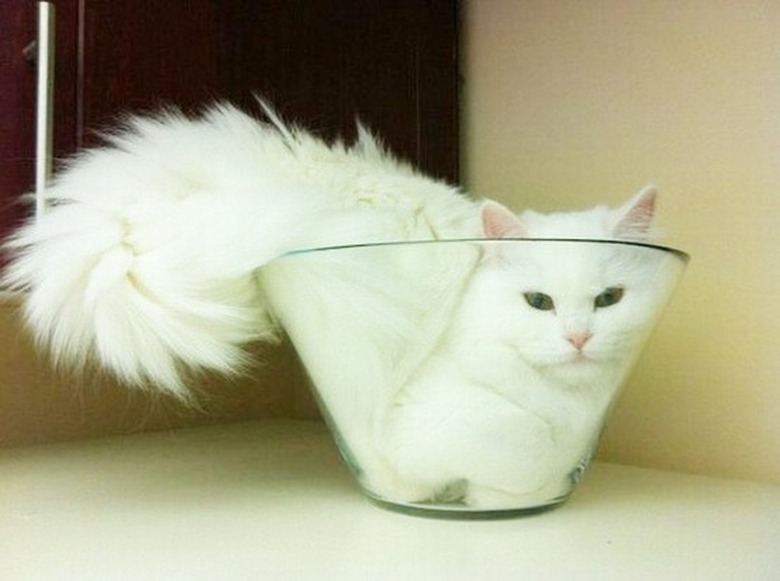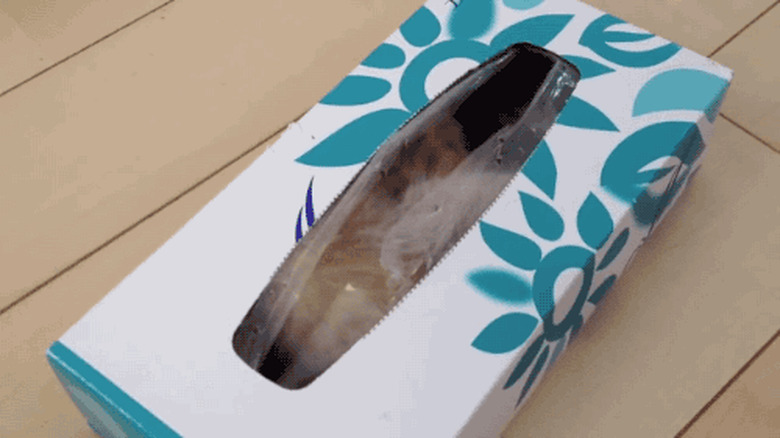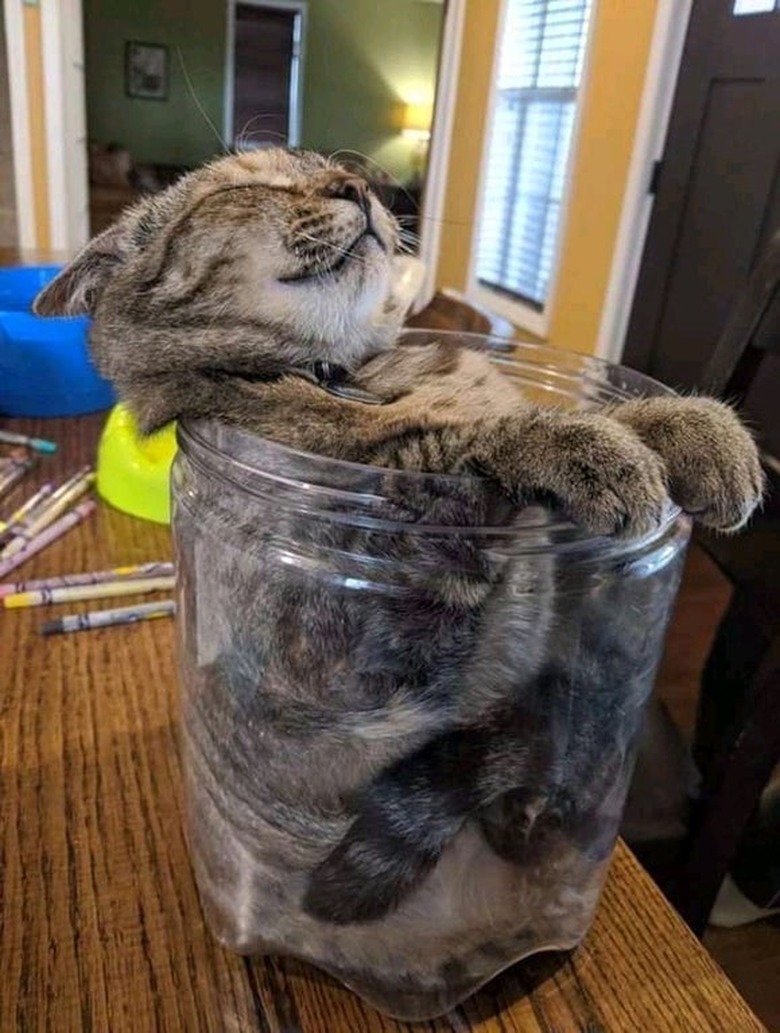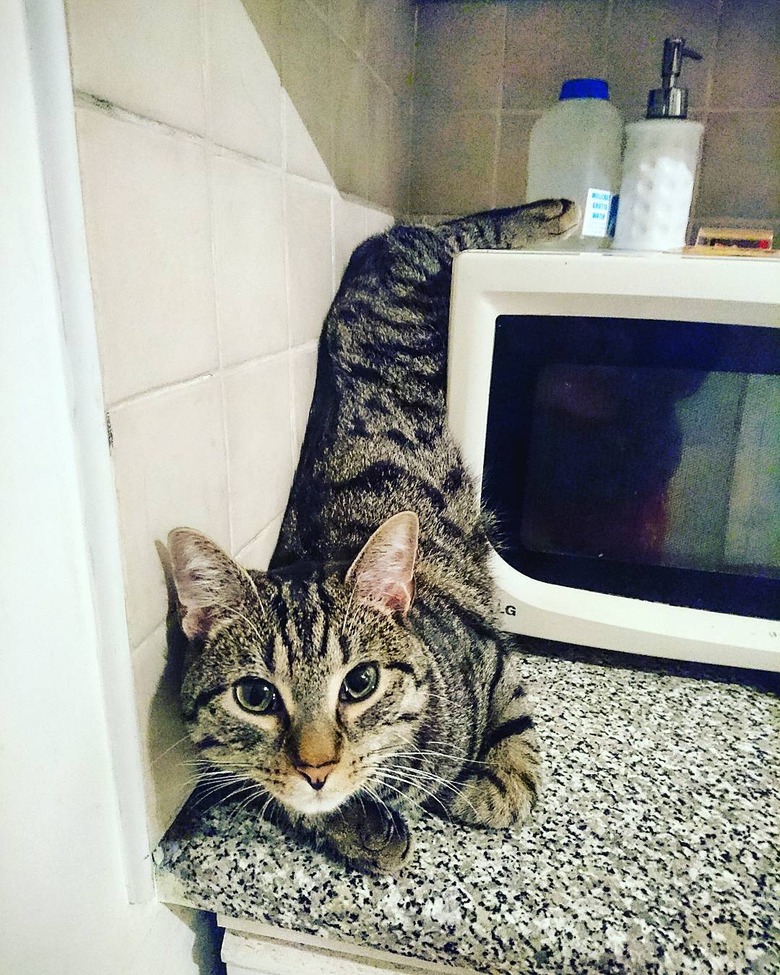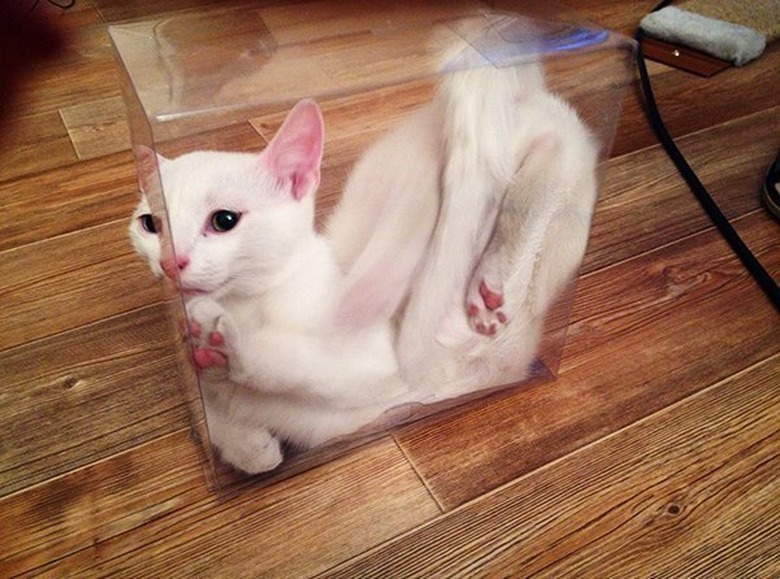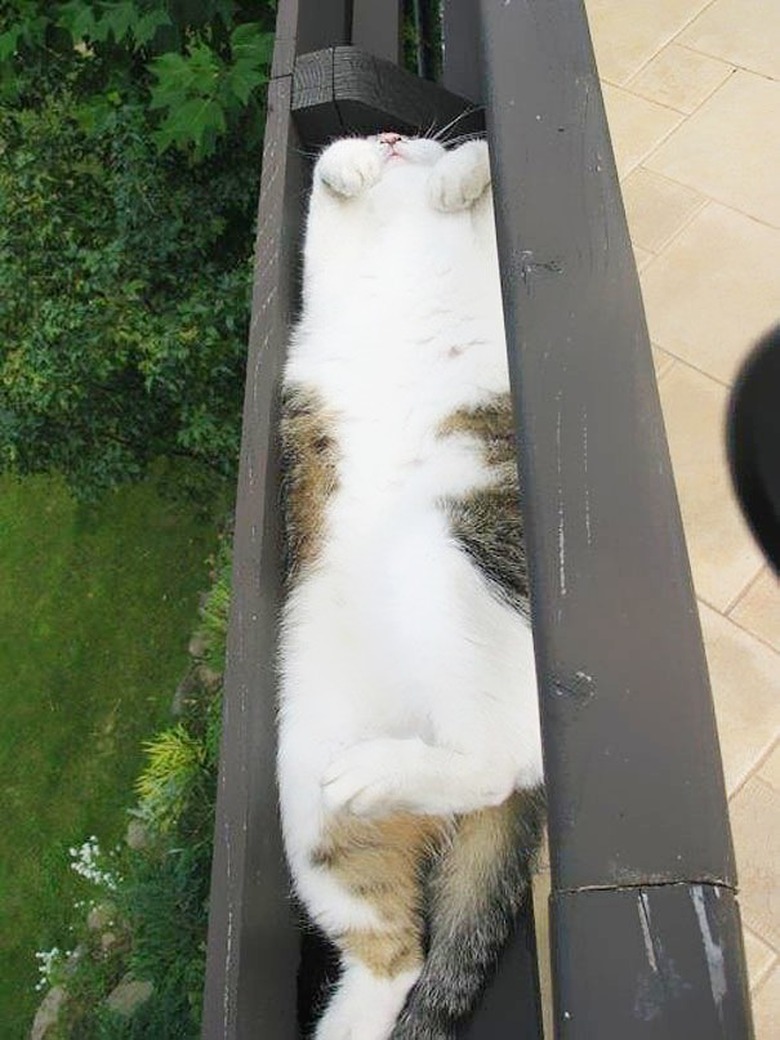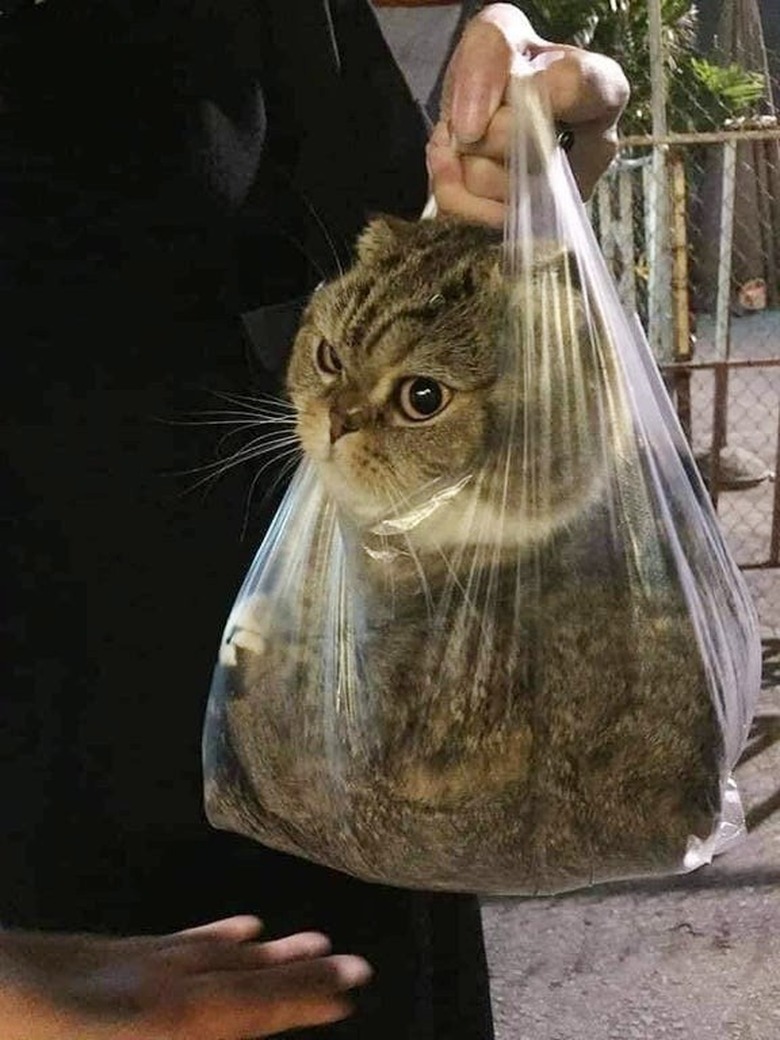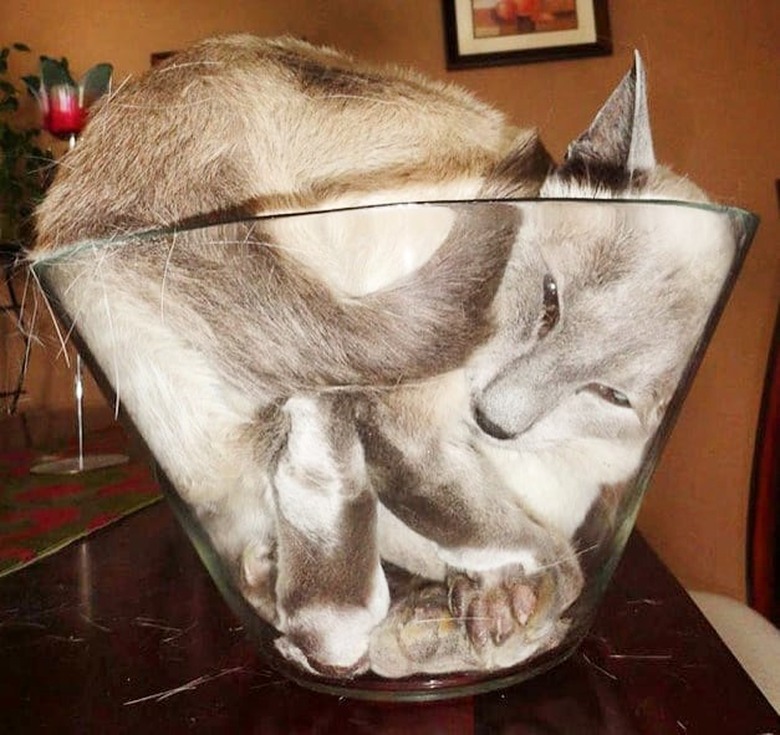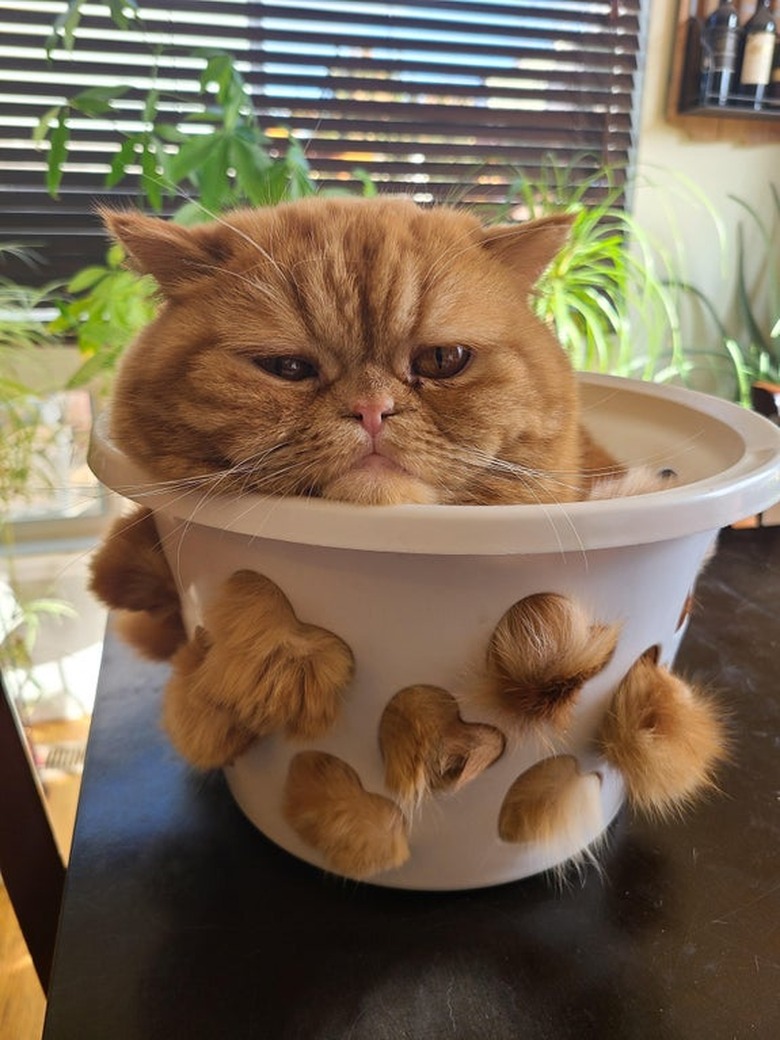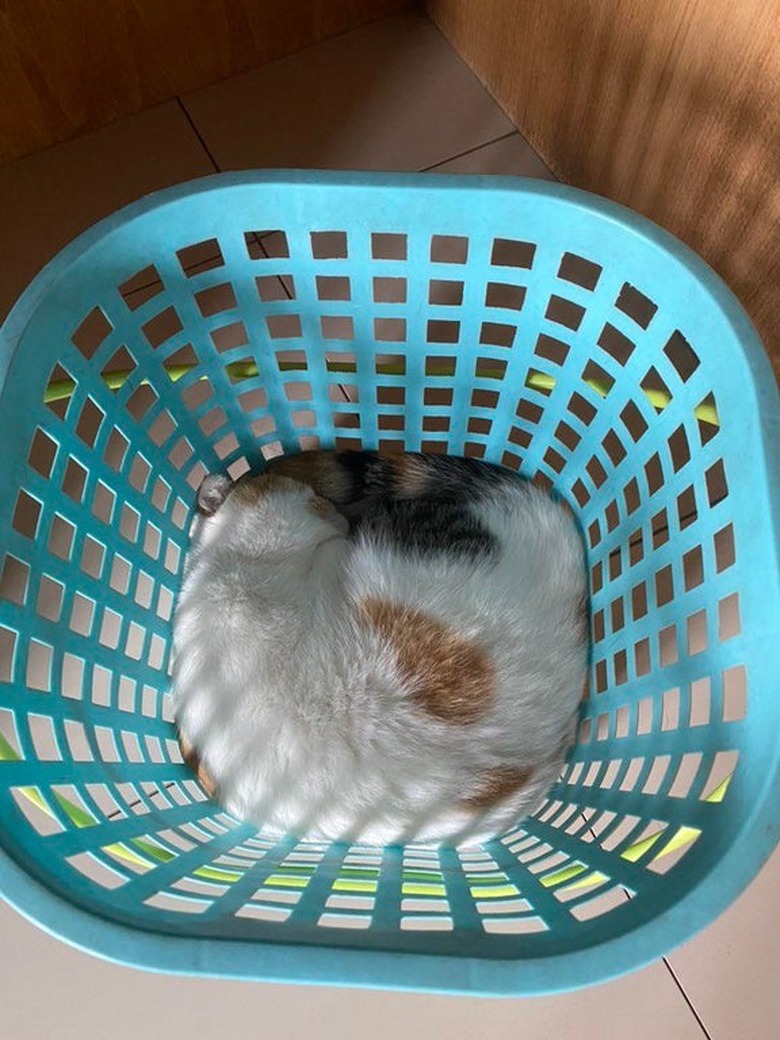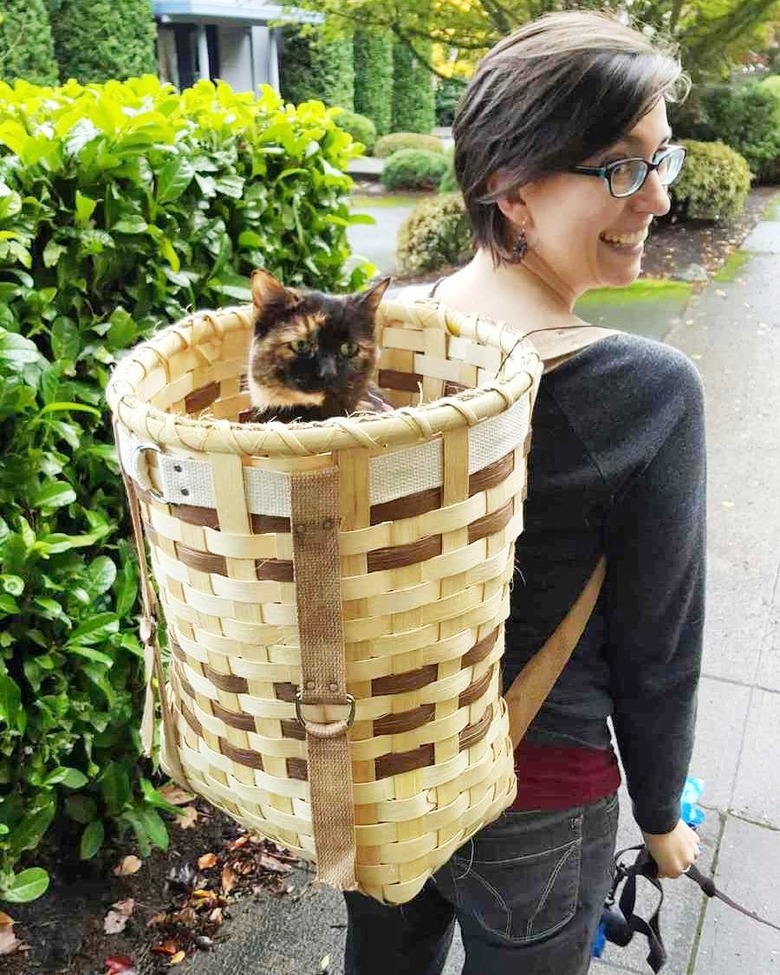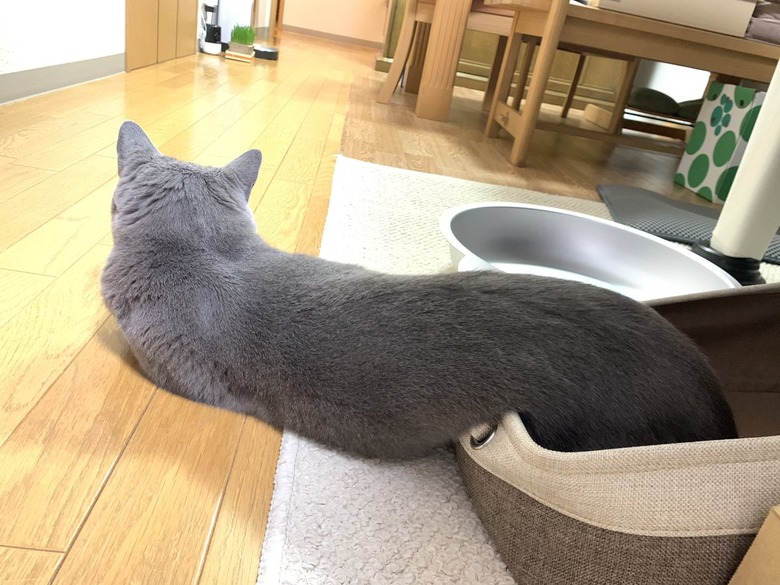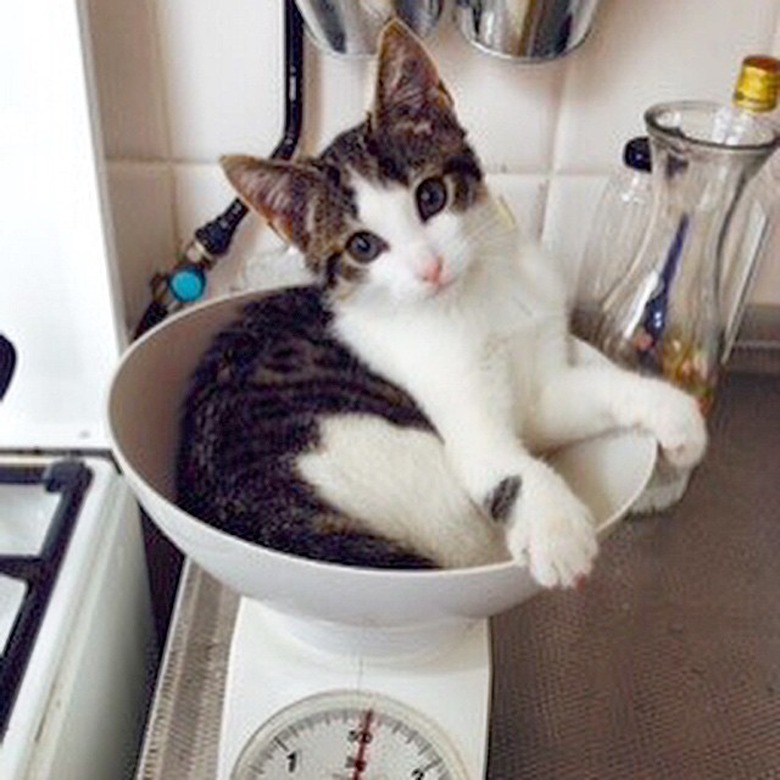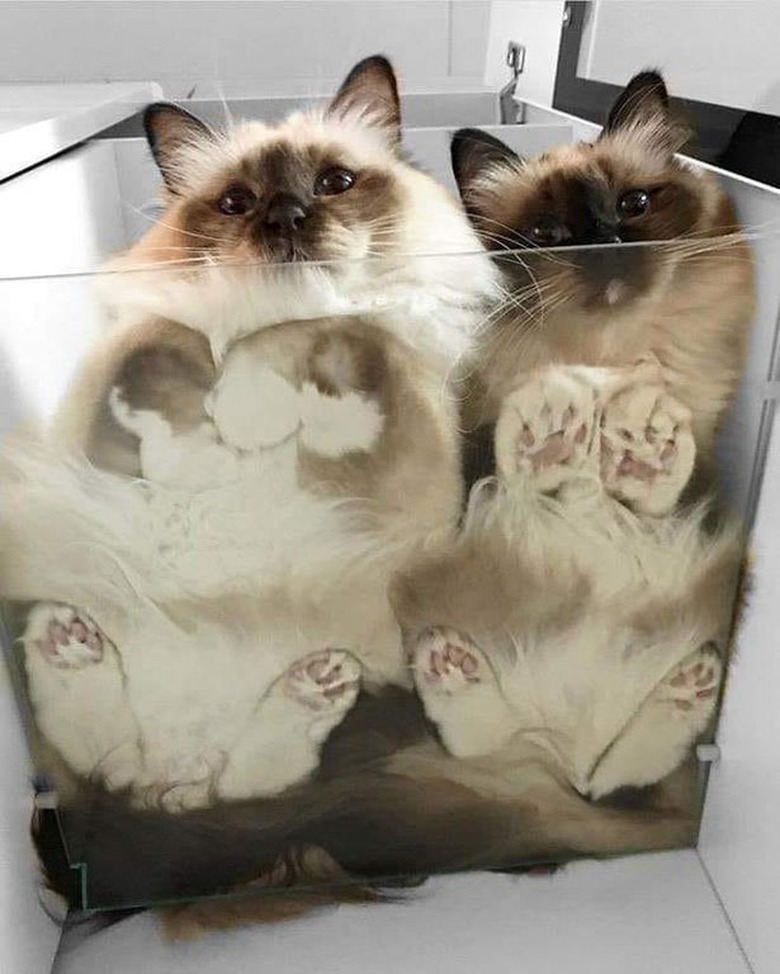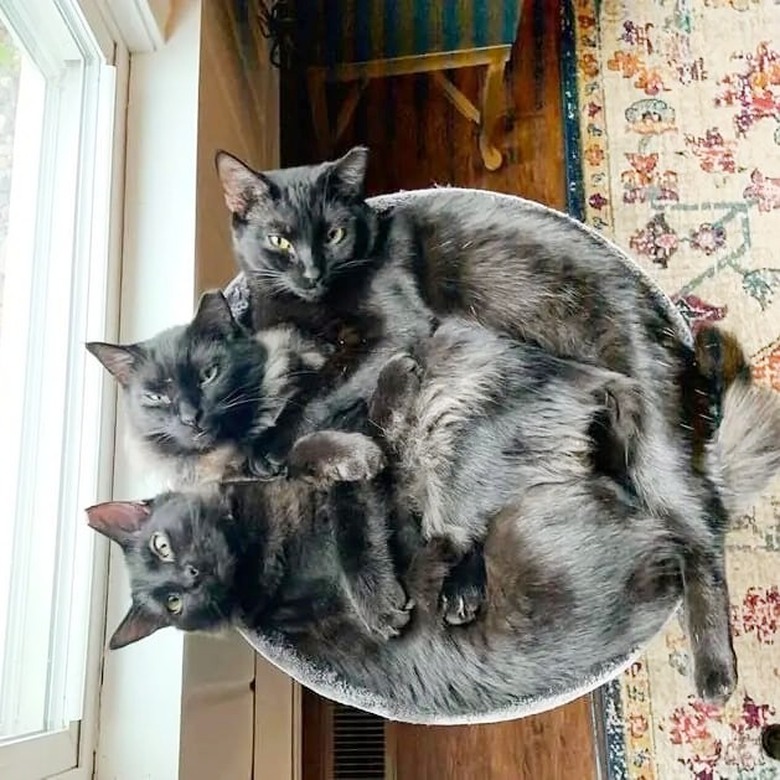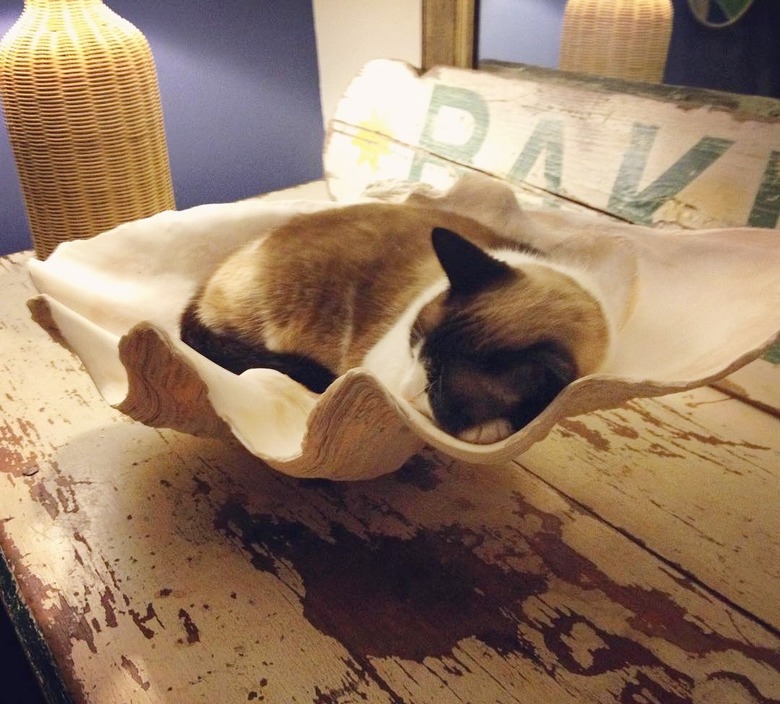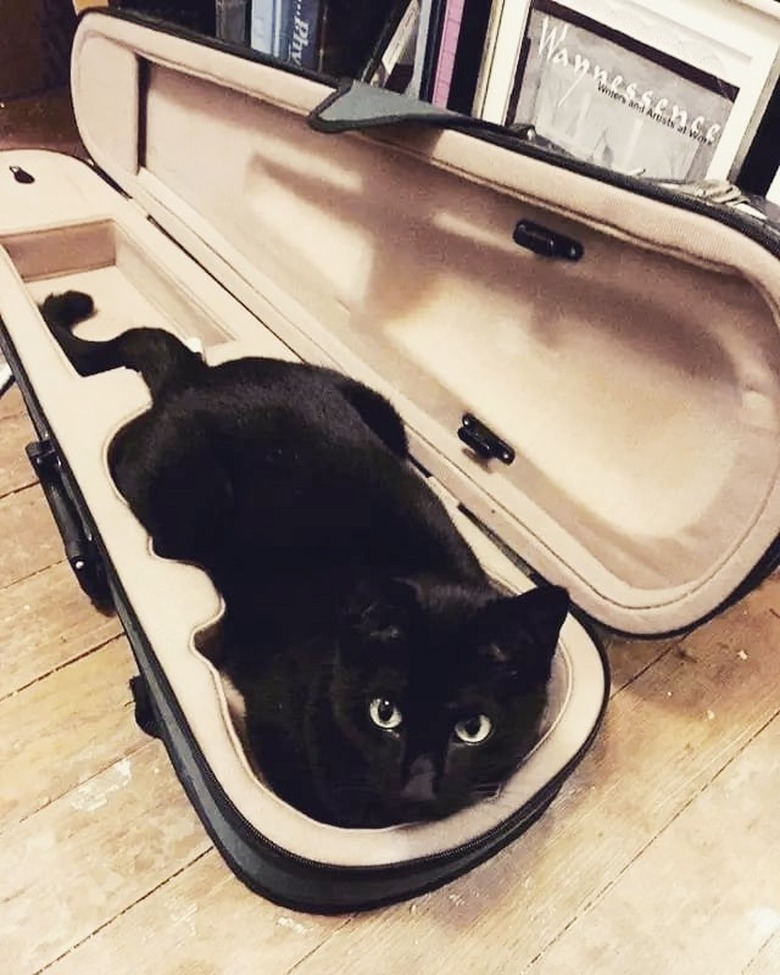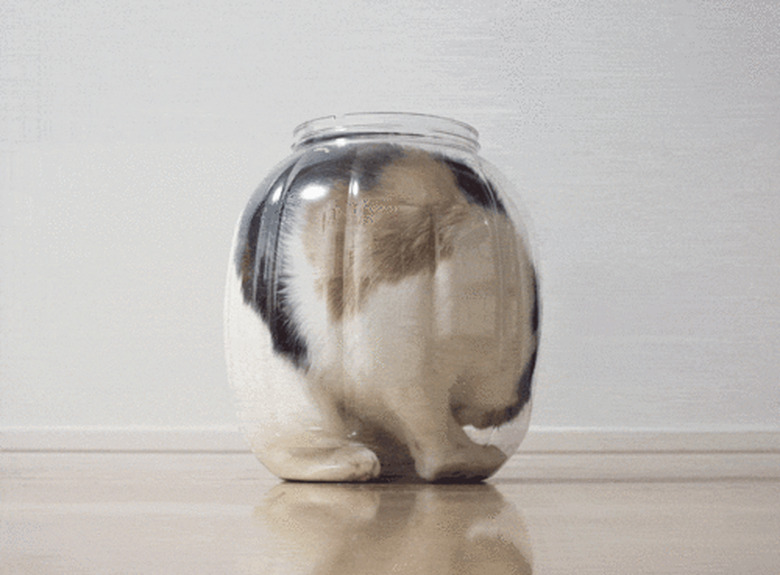20 Cats Who Think They're Liquid
Somewhere between solids and gases is the fourth state of matter largely hidden to science: cat.
Is your cat a liquid? Here are the telltale signs to look for.
1. They expand to fit their container.
1. They expand to fit their container.
2. Like vases, for example.
2. Like vases, for example.
3. And sometimes the container will expand — or strain under weight and pressure — to meet their occasionally chonky volume. If the container is too stressed, catastrophic failure can strike!
3. And sometimes the container will expand — or strain under weight and pressure — to meet their occasionally chonky volume. If the container is too stressed, catastrophic failure can strike!
4. If they fits, they swish around.
4. If they fits, they swish around.
5. If you fill above the brim, they're at danger of tipping over.
5. If you fill above the brim, they're at danger of tipping over.
6. They fit in cracks and crevices and other narrow crannies and then expand outwards as temperatures change.
6. They fit in cracks and crevices and other narrow crannies and then expand outwards as temperatures change.
7. Like a carbonated beverage, contents can be volatile so it's best to let them settle after packing and transit.
7. Like a carbonated beverage, contents can be volatile so it's best to let them settle after packing and transit.
8. They can cause backups if they clog drains.
8. They can cause backups if they clog drains.
9. They are commonly transported in one of the three Bs: buckets, bowls and ...
9. They are commonly transported in one of the three Bs: buckets, bowls and ...
... and bags.
... and bags.
10. They have definite volume but no definite shape.
10. They have definite volume but no definite shape.
11. If your container is porous, they will spill out.
11. If your container is porous, they will spill out.
12. They take the shape of their vessel and will remain inside their vessel until moved or acted upon.
12. They take the shape of their vessel and will remain inside their vessel until moved or acted upon.
13. They have different densities and can be heavier than solids therefore requiring clever transport strategies.
13. They have different densities and can be heavier than solids therefore requiring clever transport strategies.
14. Remember to keep towels on hand for easy cleanup.
14. Remember to keep towels on hand for easy cleanup.
15. Ordinary scientific tools are often no match for observing the liquid cat phenomenon.
15. Ordinary scientific tools are often no match for observing the liquid cat phenomenon.
16. Some are pure liquids and some are liquid mixtures.
16. Some are pure liquids and some are liquid mixtures.
17. Liquid particles are free to move over each other, but are still attracted to each other.
17. Liquid particles are free to move over each other, but are still attracted to each other.
18. They pool in places you would expect ...
18. They pool in places you would expect ...
19. ... and maybe some you wouldn't.
19. ... and maybe some you wouldn't.
Probably best not to let this case get watercatlogged for too long.
20. In summary, a preponderance of evidence confirms our initial hypothesis: Cats are indeed liquid.
20. In summary, a preponderance of evidence confirms our initial hypothesis: Cats are indeed liquid.
Is your cat a kitty contortionist? Tell us about it in the comment section below!
